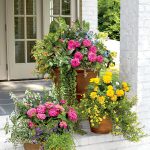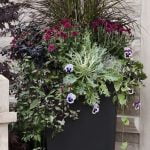Are you feeling stumped about how to transform your small yard into an outdoor oasis? Look no further for landscaping ideas for small yards. Even though small spaces can present unique challenges, they also offer the opportunity for creativity and innovation.
In this article, we will explore how to make the most of your compact outdoor space, from assessing its layout to choosing the right plants and creating functional areas. Whether you want to create a cozy retreat for lounging or a vibrant garden for entertaining, we’ve got you covered with practical tips and inspiration.
When it comes to landscaping a small yard, understanding the challenges and opportunities is key. In this section, we will delve into the specific considerations that come with small outdoor spaces. By assessing your space and maximizing vertical space, you can make the most of every inch of your yard.
Additionally, we’ll explore how to choose the right plants and incorporate hardscaping features to add interest and functionality. With our comprehensive guide, you’ll be equipped with the knowledge and inspiration needed to turn your small yard into a beautiful and functional outdoor haven. So let’s dive in and discover how to unlock the potential of your compact outdoor space.
Assessing Your Space
When it comes to landscaping ideas for small yards, one of the most important steps is assessing your space. Before you begin planning for any landscaping project, it’s crucial to take accurate measurements and evaluate the layout of your small yard. By doing so, you can make the most of the space you have and create a beautiful outdoor area that suits your needs.
Measure Twice, Cut Once
Taking precise measurements of your small yard is essential for planning and executing your landscaping ideas. Use a measuring tape to determine the exact dimensions of your yard, including the length, width, and any irregular or angled sections. Additionally, make note of any permanent fixtures such as fences, trees, or utility boxes that you’ll need to work around when designing your landscape.
Evaluate Existing Features
After taking measurements, it’s important to evaluate the existing layout and features of your small yard. Take note of any natural elements such as slopes or drainage patterns that could impact your landscaping plans.
Consider how sunlight moves through the space at different times of day to help determine which areas are best suited for plants or seating areas. Understanding these aspects will allow you to make informed decisions when creating a design that maximizes the potential of your small yard.
Create a Rough Sketch
Once you’ve gathered all necessary measurements and evaluated your small yard, consider creating a rough sketch or digital plan. This will help you visualize how different landscaping elements can fit within the space and assist in making design decisions before moving forward with any physical changes. A well-thought-out plan based on accurate assessments will set the foundation for a successful landscaping project in a small yard.
Maximizing Vertical Space
When working with a small yard, it’s essential to make the most of every available inch of space, including vertical surfaces. Utilizing walls, trellises, and hanging planters can provide a wealth of opportunities to add greenery and color to your small yard without taking up precious ground space.
One excellent way to maximize vertical space is by installing a living wall or vertical garden. This type of feature can be as simple as a series of wall-mounted planters or as elaborate as a custom-designed system. Not only does a living wall add visual interest, but it also helps with air quality and insulation while reducing noise and heat.
Another creative option for adding greenery to your small yard is by incorporating trellises. These structures create an excellent opportunity for growing climbing plants such as vines, roses, or even edible crops like cucumbers or peas. By training these plants to grow vertically along trellises, you can enjoy the beauty and functionality they bring without sacrificing square footage on the ground.
Hanging planters are yet another way to bring life and color to your small yard while freeing up valuable floor space. Whether suspended from pergolas, eaves, or tree branches, these planters can hold an array of flowers, herbs, or trailing vines that add visual appeal at eye level without overwhelming the limited area below.
| Vertical Gardening Method | Benefits |
|---|---|
| Living Wall | Visual interest, air quality improvement |
| Trellises | Ability to grow climbing plants without taking up ground space |
| Hanging Planters | Adds visual appeal at eye level without overwhelming limited areas |
Choosing the Right Plants
When it comes to landscaping ideas for small yards, choosing the right plants is crucial. In a limited space, it’s important to select low-maintenance, space-saving plants and flowers that will thrive without taking over the entire yard. First, consider the amount of sunlight your yard receives and choose plants that are suitable for either full sun or shade, depending on your yard’s conditions.
For small yards, it’s also important to choose plants that won’t outgrow their allotted space. Look for compact varieties of trees, shrubs, and flowers that won’t overwhelm the yard as they mature. Additionally, opt for plants with multiple-season interest such as evergreen shrubs or perennials that offer both foliage and blooms throughout the year.
Some great options for low-maintenance and space-saving plants include dwarf shrubs like boxwood or gardenia, ornamental grasses such as Japanese forest grass or blue fescue, and perennials like hostas and daylilies. When considering flowering plants, look for compact varieties of roses, hydrangeas, and coneflowers to add color without taking up excessive space.
To ensure your small yard remains visually appealing throughout the year, try to select a mix of plants that provide structure (such as evergreen shrubs), seasonal interest (such as flowering perennials), and textural diversity (like ornamental grasses). This will create a balanced and visually interesting landscape in your limited outdoor space.
| Low-Maintenance Plants | Characteristics |
|---|---|
| Dwarf Boxwood | Compact evergreen shrub with minimal pruning needs |
| Japanese Forest Grass | Ornamental grass with colorful foliage that adds texture to small yards |
| Dwarf Hydrangea | Space-saving flowering shrub that blooms in summer without taking up too much room |
Creating Functional Areas
When landscaping a small yard, it’s important to make the most of every inch of available space. One effective way to do this is by dividing your small yard into practical areas that serve specific purposes, such as dining, lounging, and gardening. By creating designated spaces within your small yard, you can maximize its usability and enhance its aesthetic appeal.
Outdoor Dining Area
One way to make the most of a small yard is by establishing an outdoor dining area. This can be achieved by adding a small bistro table and chairs, or even a built-in bench with a fold-down table for compact dining. Consider using space-saving furniture and flexible seating options such as folding chairs or stackable stools to optimize the available space.
Lounging Space
In addition to a dining area, consider incorporating a lounging space in your small yard. This can be achieved by adding comfortable seating such as a cozy outdoor sofa or a couple of lounge chairs. To save space, consider using multi-functional furniture pieces that can serve dual purposes, such as storage benches that also provide seating.
Gardening Zone
For those who enjoy gardening, it’s important to carve out an area in your small yard where you can nurture plants and flowers. Utilize vertical space with hanging planters or wall-mounted flower boxes to free up ground space for other activities. Additionally, consider implementing raised garden beds or container gardening to maximize planting potential without taking up too much room.
By creating functional areas within your small yard for dining, lounging and gardening, you can make the most of limited space while still enjoying the beauty and benefits of outdoor living. These ideas will not only enhance the usability of your small yard but also add visual interest and charm to the overall landscaping design.
Incorporating Hardscaping
When working with a small yard, it’s important to make the most of every inch of space. One way to add interest and functionality to your small yard is by incorporating hardscaping features. By integrating paths, small patios, and other hardscape elements, you can create an inviting outdoor space that maximizes both style and function.
Here are some ideas for incorporating hardscaping into your small yard:
- Create a winding path: A curved path can add visual interest to a small yard while also creating flow and movement. Use materials like gravel or stepping stones to define the path and lead visitors through the space.
- Design a small patio area: Even in a small yard, there may be room for a cozy patio where you can relax or entertain guests. Choose space-saving furniture and consider adding an umbrella or pergola for shade.
- Add a focal point: Whether it’s a small fountain, sculpture, or fire pit, adding a focal point to your small yard can create a sense of visual interest and draw attention to specific areas.
By carefully planning and integrating hardscape features into your small yard, you can enhance its functionality and create an aesthetically pleasing outdoor oasis.
Remember that when considering landscaping ideas for small yards, incorporating hardscaping is just one element of overall design – assessing your space, choosing the right plants, and creating functional areas are all essential components as well.
Lighting and Decor
When it comes to landscaping ideas for small yards, strategic lighting and decor play a crucial role in adding ambiance and personality to your outdoor space. Here are some tips for creating a welcoming and visually appealing atmosphere in your small yard:
- Choose the right lighting: Opt for fixtures that are specifically designed for outdoor use and are suitable for small spaces. Consider using LED lights to save energy and create a warm, inviting glow.
- Highlight focal points: Use lighting to draw attention to key features in your yard, such as a beautiful tree, a water feature, or a piece of outdoor art. This can help create visual interest and enhance the overall look of your small yard.
- Utilize decorative elements: Incorporate decorative elements such as colorful throw pillows, eye-catching planters, or unique garden sculptures to add personality to your small yard. These elements can help reflect your personal style and make the space feel more inviting.
In addition to these tips, it’s important to consider the placement of lighting and decor in your small yard. Avoid overwhelming the space with too many elements, and focus on creating a cohesive design that enhances the natural beauty of your outdoor area.
Ultimately, by incorporating thoughtful lighting and decorative elements into your small yard, you can transform it into a charming and enjoyable oasis that reflects your personal style and enhances the overall ambiance of your home. With careful planning and creativity, even the smallest of yards can become a beautiful retreat for relaxing and entertaining.
Maintenance and Care
In conclusion, landscaping a small yard may present challenges, but with the right approach and creative ideas, it can become a beautiful and functional outdoor space. By carefully assessing the available space, maximizing vertical areas, choosing the right plants, creating functional zones, incorporating hardscaping features, and adding lighting and decor elements, you can transform your small yard into a lush oasis.
Implementing low-maintenance landscaping ideas for small yards will not only enhance the visual appeal of your outdoor space but also make it easier to care for in the long run.
One key aspect of maintaining a beautiful small yard is regular upkeep and care. This includes watering, weeding, pruning, and other essential tasks to ensure that your plants and hardscaping features continue to thrive. Additionally, keeping an eye on the changing seasons and making adjustments as needed will help your small yard look its best year-round.
With careful planning and attention to detail, even the smallest of yards can be transformed into a stunning outdoor retreat. By applying the tips and suggestions provided in this guide for landscaping ideas for small yards, you can create a personalized and inviting space that reflects your style and meets your outdoor living needs. From cozy seating areas to vibrant flower beds, there are endless possibilities for making the most of your compact outdoor space.
Frequently Asked Questions
How Can I Make My Small Yard Look Nice?
Making a small yard look nice can be achieved by maximizing the space you have. Consider adding multi-functional furniture, using vertical gardening techniques, and incorporating strategic lighting to make the space feel larger and more inviting. Using low-maintenance plants and creative landscaping can also enhance the overall appearance of your small yard.
What Is the Least Expensive Backyard Landscaping?
The least expensive backyard landscaping option is to focus on DIY projects and simple designs that utilize inexpensive materials. This could include using gravel or mulch for pathways, planting low-cost perennials or annuals, creating a small vegetable or herb garden, and repurposing materials like pallets or old containers for planters.
How Can I Make My Backyard Beautiful on a Low Budget?
To make your backyard beautiful on a low budget, consider starting with a well-thought-out plan that includes budget-friendly landscaping ideas such as growing your own plants from seeds or cuttings, recycling and upcycling materials for outdoor decor, using native plants that are easy to maintain, and incorporating elements like a small water feature or fire pit that can be built inexpensively.
Making smart choices about where to invest your money in key focal points will help create a beautiful backyard without breaking the bank.

Welcome to my gardening blog! I am passionate about plants and enjoy sharing my knowledge and experiences with others. In this blog, I will write about everything related to gardening, from tips on how to get started to updates on my own garden projects.





